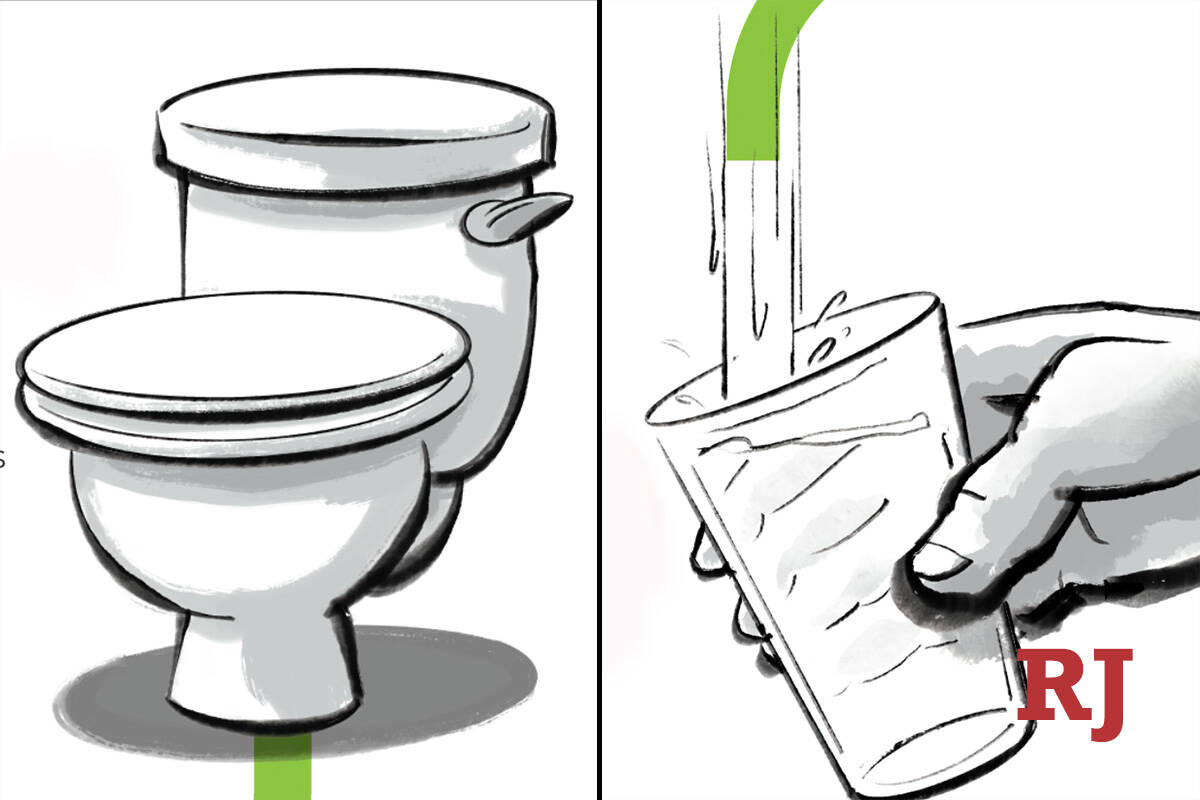From toilet to tap: How Las Vegas recycles its sewage water
Drinking recycled sewage water is gaining steam across the West as cities grapple with the effects of more than two decades of drought that has dwindled water supplies from the already overtaxed Colorado River.
Southern California is planning to build a $3.4 billion plant that will allow the Metropolitan Water District in Los Angeles to put cleaned wastewater into groundwater aquifers for reuse rather than sending that water to the ocean.
The project would give the city another 155,000 acre-feet of water annually, or enough for about 1.5 million people, according to the Metropolitan Water District.
But for Las Vegas, it’s a process that’s been used for decades — and one that has helped stretch the valley’s small share of the Colorado River.
Every gallon of treated wastewater sent back to the lake allows the valley to pull an extra gallon from the river through what’s known as return flow credits. That’s how Nevada has been able to stretch its 300,000 acre-foot cut of the Colorado River and use closer to 450,000 acre-feet on average each year.
So how does that water get from the toilet to the lake and, for at least some of that water, back to your tap?
It starts its journey through an elaborate system of sewer pipes and pumps that bring the wastewater from homes and businesses to one of the treatment facilities on the east side of the valley, such as the Clark County Water Reclamation District’s on East Flamingo Road.
“This is like capillaries and veins in a body” said Daniel Fischer, deputy general manager for the Clark County Water Reclamation District.
Fischer said the Las Vegas Valley sends roughly 190 million gallons of wastewater to municipal treatment facilities on average each day, and about 106 million gallons of that water gets treated by the county’s reclamation district.
The valley generally slopes from the northwest to the southeast, so much of the flow of that water is aided by gravity as it makes its way to the treatment facilities.
Once the water gets to those facilities, the operation turns into something more akin to an assembly line. The wastewater goes from process to process at the treatment facilities, getting cleaner and cleaner at each turn.
The process at the plant begins with filtering out the biggest solids — rags, plastics and large chunks of, well, human waste — at the headworks of the facility before going through a finer grit filter to sort out the smaller items like coffee grounds, egg shells and sand.
From there, the remaining particles are sorted out by hungry bacteria and other organisms, and go through multiple filters of sand and anthracite before they get blasted by ultraviolet light to disinfect the smallest of particles right before the water makes its way out of the county’s treatment facility and into the Las Vegas Wash.
There are also literal tons of biosolids produced throughout the process. The Clark County reclamation district produces about 500 tons of biosolid sludge each day that gets hauled away to the dump by dozens of trucks.
All told, the trip for the water to go through the initial headworks at the treatment facility to it being sent back out into the Las Vegas Wash takes about 18 hours on average, Fischer said.
The water meanders to Lake Mead, passing the all-important return flow gauge along the way so water managers know how much water the valley is sending back to the system for those all-important return flow credits.
That’s when the process starts all over again. The Southern Nevada Water Authority pumps water from Lake Mead and sends it to local water treatment facilities before it heads back to taps across the valley.
Contact Colton Lochhead at clochhead@reviewjournal.com. Follow @ColtonLochhead on Twitter.
Las Vegas wastewater by the numbers
— 190 million gallons treated each day on average.
— 18 hours from the time the water gets to the plant to the time it leaves, give or take.
— 500 tons of sludge produced each day during wastewater treatment.






















